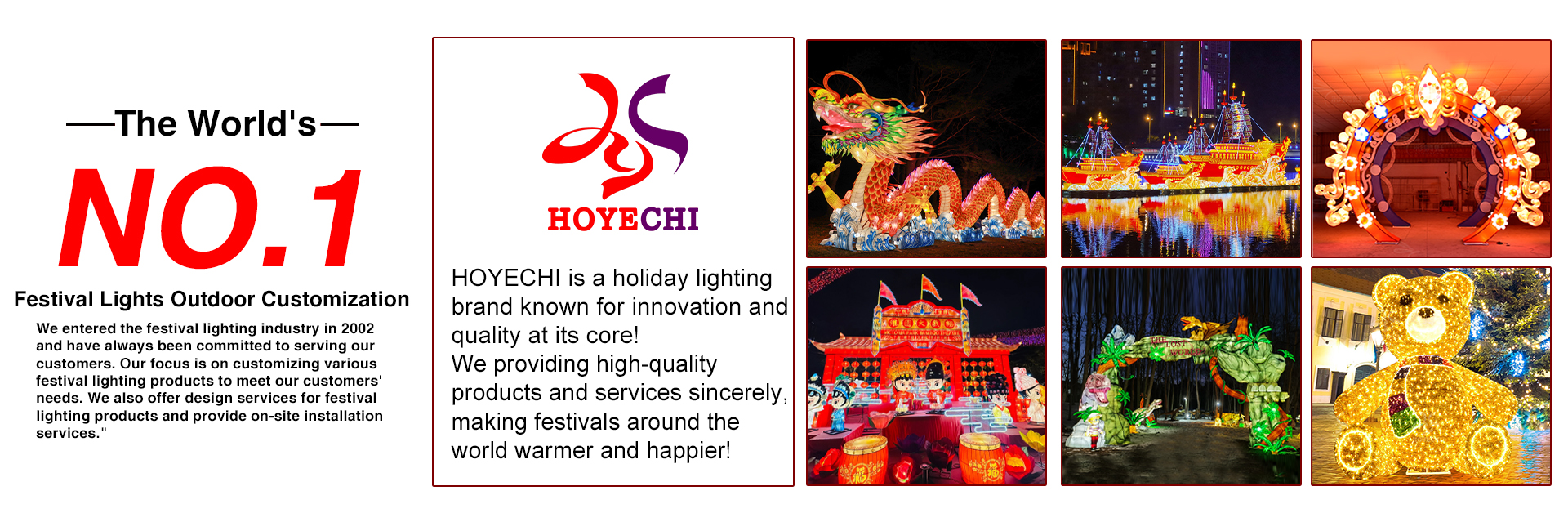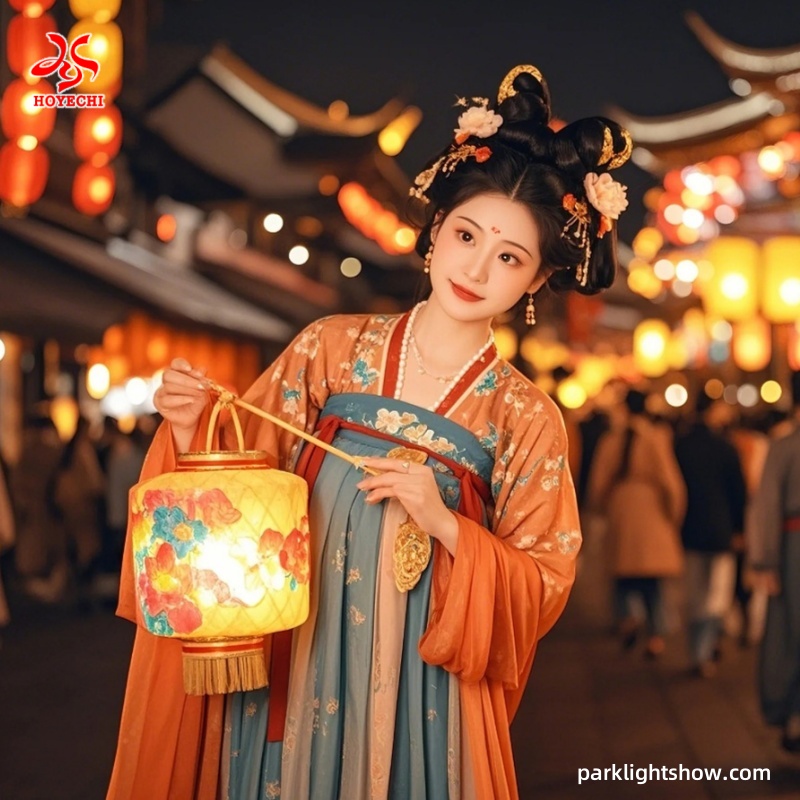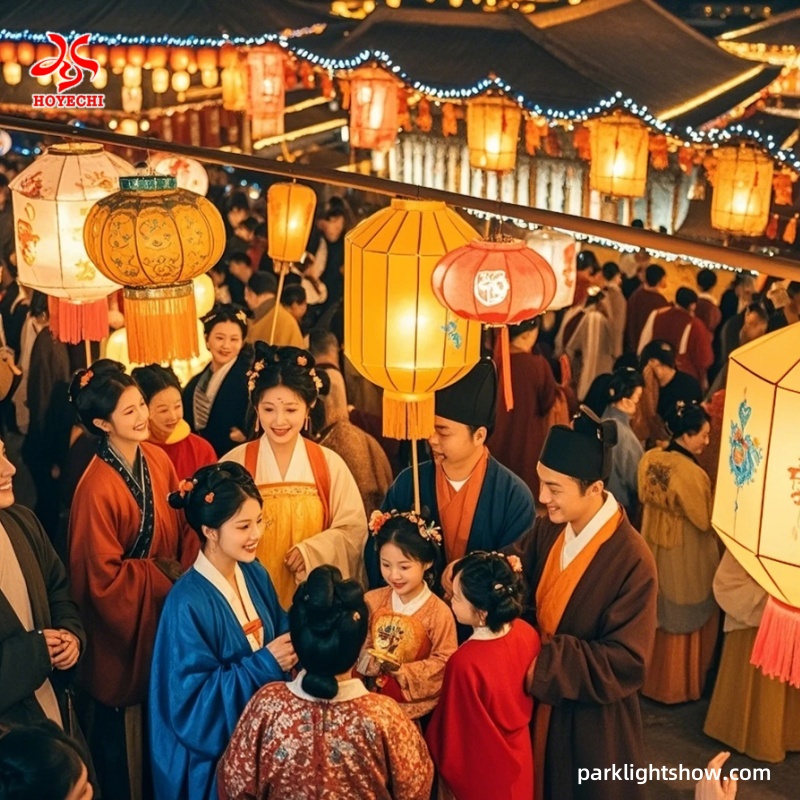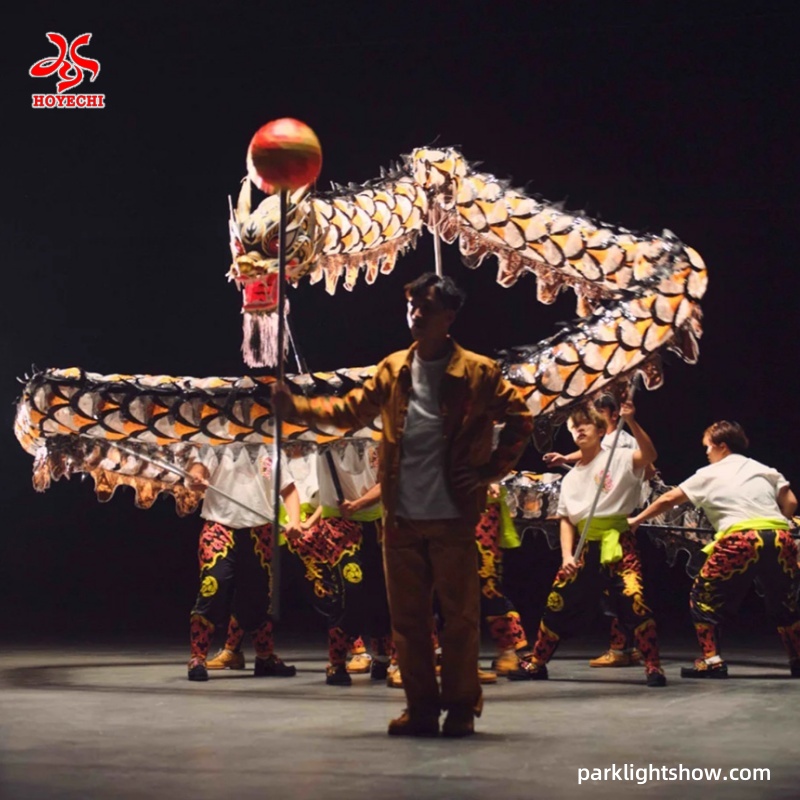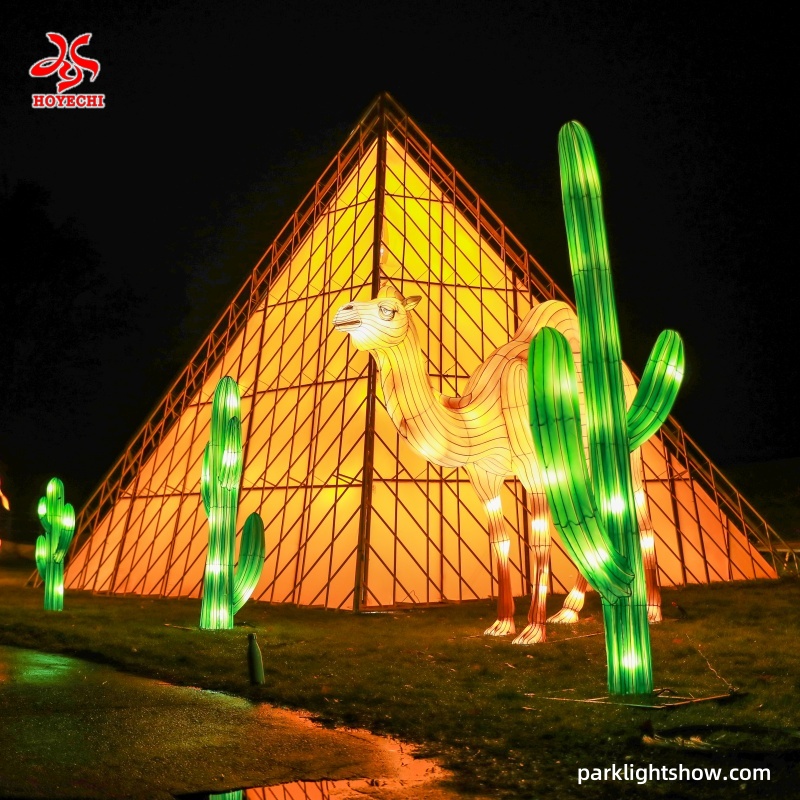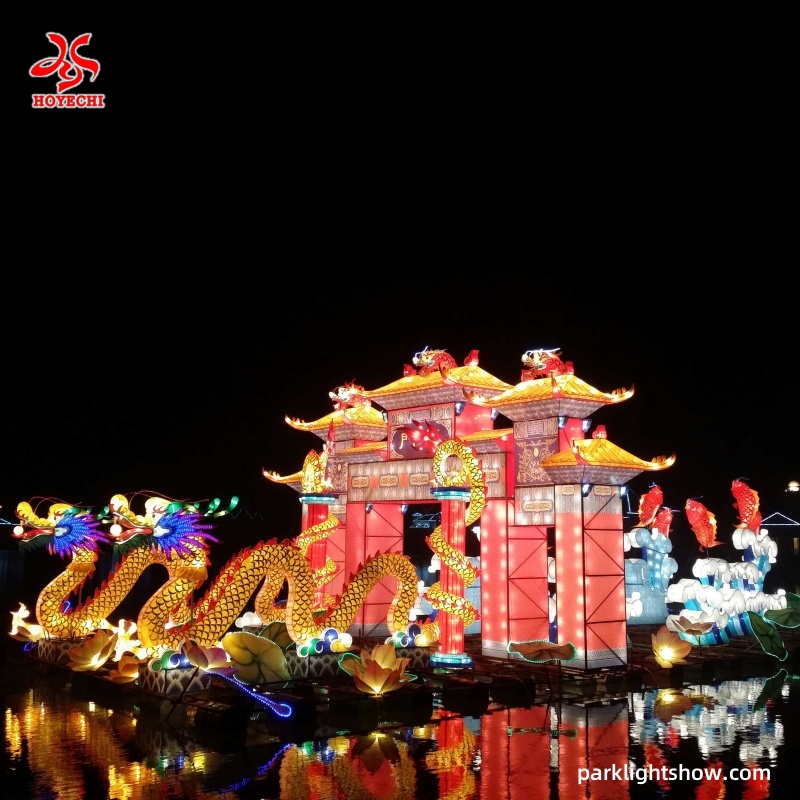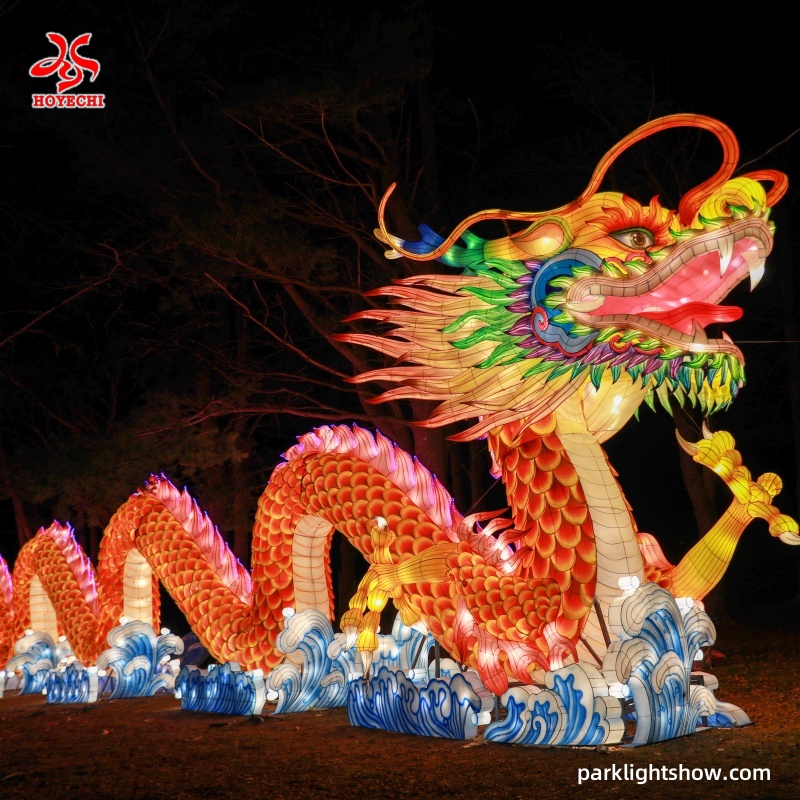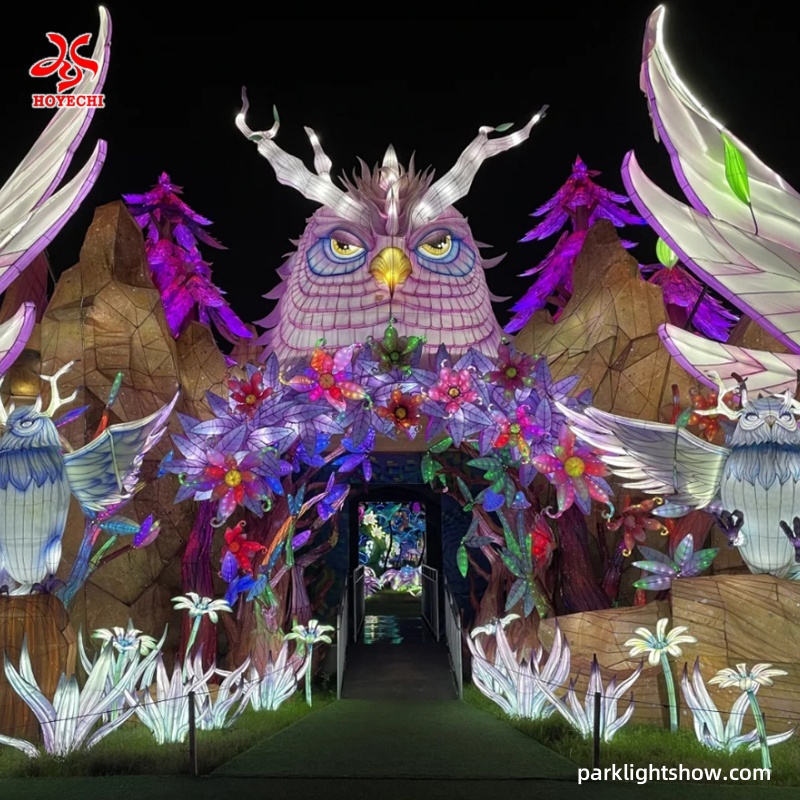1. Introduction: What is the Lantern Light Festival?
Whenever major holidays approach, as night falls, colorful themed lights illuminate parks and squares, unfolding a dreamlike visual feast. This is the Lantern Light Festival, also known as the “Light Festival” or “Lantern Festival.” Such events are growing in popularity worldwide, especially in countries like the United States, Canada, and Australia, where they have become one of the most anticipated public art events during the winter holidays.
But did you know that this light festival actually has deep historical roots in China, originating from the traditional Lantern Festival of the Chinese Lunar New Year?
In China, more than 2,000 years ago, people lit thousands of colorful lanterns on the 15th day of the first lunar month to celebrate the first full moon of the new year, wishing for a safe and prosperous year ahead. This festival tradition, known as the “Lantern Festival,” has over time not only become an important symbol of Chinese folklore but also gradually spread beyond China, influencing festive cultures worldwide.
Today, let’s travel through time and explore the origin of the Lantern Light Festival—China’s Lantern Festival, to see how it evolved from ancient times into the modern era and how it gradually became a globally beloved cultural symbol.
2. The Origin of the Chinese Lantern Festival (Cultural Background)
The history of the Lantern Light Festival can be traced back to one of China’s most traditional and important holidays—the Lantern Festival (also known as the “Shangyuan Festival”). It falls on the 15th day of the first lunar month, the first full moon after the Chinese New Year, symbolizing reunion, harmony, and hope.
The Original Purpose of the Lantern Festival: Blessings and Welcoming Auspiciousness
Originally, the Lantern Festival was not just for its aesthetic beauty but carried a deep sense of reverence and blessings for nature and the universe. According to Records of the Grand Historian, as early as the Western Han Dynasty, Emperor Wu of Han held a ceremonial event of lighting lanterns to honor the heavens. During the Eastern Han Dynasty, Emperor Ming of Han, in an effort to promote Buddhism, ordered lanterns to be hung in palaces and temples on the 15th day of the first lunar month, gradually forming the tradition of the folk lantern festival.
This custom spread from the court to the people, gradually becoming an important way for ordinary citizens to celebrate the festival and wish for peace and safety. By the Tang Dynasty, the Lantern Festival reached its first peak, with both the palace and the people competing to hang lanterns and celebrate through the night.
Traditional Customs and Cultural Symbols in Lantern Festivals
Apart from admiring lanterns, people would also engage in a series of traditional activities such as:
Guessing Lantern Riddles: Writing riddles on lanterns for fun and education;
Dragon and Lion Dance: To pray for blessings and ward off evil, creating a lively atmosphere;
Lantern Parades: Lantern boats, towers, and figurines walking through the streets to create a festive ambiance;
Family Reunions with Tangyuan: A symbol of completeness and happiness.
Those lanterns, far from just illuminating the night, carry people’s yearning for a better life and the value of family reunion.
The Seed of Culture Spreads from the East to the World
Over time, the Lantern Festival has not only survived the passage of time but has also flourished in modern times. Especially with Chinese immigration and cultural export, the art form of lantern festivals has been increasingly adopted and integrated by more countries, forming the international Lantern Light Festival we see today—a festival that connects the traditional and modern, the East and the West.
3. The Evolution and Development of Traditional Lantern Festivals
The Lantern Festival in China has passed through a thousand years of inheritance and transformation, and has long since evolved beyond simple handcrafted lanterns into a grand festival that combines art, aesthetics, technology, and regional culture. Its evolution is also a testament to the continuous innovation and openness of Chinese culture.
Tang and Song Dynasties: The First Large-scale Urbanization of Lantern Festivals
In the Tang Dynasty, particularly in Chang’an, the Lantern Festival became highly organized with widespread public participation. Records show that the court hung large numbers of lanterns on major streets, towers, and bridges, and the people also freely participated, with no curfew. The streets were bustling, and the lights lasted until dawn.
The Song Dynasty took the lantern festival to its artistic peak. In cities like Suzhou and Lin’an, professional lantern makers and “lantern markets” appeared. The lanterns not only featured traditional patterns but also incorporated contemporary poetry, mythology, and theatrical characters, making them truly popular visual art for the people.
This custom continued into the Ming and Qing dynasties.
20th Century Modern Folk Lantern Festivals: Entering People’s Lives
In the 20th century, the Lantern Festival became widely popular in both urban and rural areas. Different regions began forming their own “lantern festival cultures.” Especially after the 1980s, the lantern festival witnessed explosive growth, with local governments promoting the development of Chinese lantern craftsmanship. This led to significant progress in both craftsmanship and scale, especially in regions like Sichuan and Guangdong, where distinct styles of lantern festivals emerged, such as the Dongguan lanterns, Chaozhou Yingge lanterns, and Guangzhou fish lanterns. These were known for their 3D lantern groups, large mechanical lanterns, and water lanterns, laying the foundation for modern large-scale light displays.
Modern Era: From Traditional Lanterns to Light Art Festivals
Entering the 21st century, the Lantern Festival further integrated with modern technology, giving rise to more diverse forms of lighting displays:
Use of LED lights, light control systems, interactive sensor technology, making the lantern displays more dynamic;
Thematic displays expanded from zodiac stories and traditional folklore to modern city landmarks, anime IPs, and international collaborative projects;
Interactive experience zones, such as children’s play areas and immersive check-in zones, enhancing audience engagement;
A rich variety of activities, such as music shows, food markets, intangible cultural heritage experiences, and stage performances, turning the lantern festival into a “nighttime economy” highlight.
Modern light festivals have far surpassed the simple act of “watching lights” and have become a multi-dimensional celebration of city culture + tourism economy + light aesthetics.
4. The Modern Lantern Light Festival: A Cultural and Artistic Fusion
As Chinese traditional lantern festivals have continued to evolve and expand, they are no longer just holiday celebrations but have become a new form of cross-cultural exchange and artistic display. It is this dual charm of culture and technology that has allowed the Lantern Light Festival to travel from the East to the world, becoming a globally popular festive brand.
Overseas Lantern Festivals: The “Going Global” of Chinese Lanterns
In recent years, an increasing number of countries and cities have started hosting lantern festivals inspired by Chinese lantern displays, such as:
United States: Long Island, New York, Los Angeles, Atlanta, Dallas, etc., attract hundreds of thousands of visitors annually;
Magical Lantern Festival in London, UK, has become one of the most popular winter cultural activities;
Canada, France, Australia, and other countries have also adopted Chinese lantern displays, even integrating them with local cultural celebrations.
Countries like South Korea have gradually developed large-scale fusion lantern festivals based on the prototype of Chinese lanterns.
Many of the large lantern displays and art installations used in these festivals are designed, customized, and shipped by Chinese lantern production teams. China’s manufacturing not only exports products but also a festive experience and cultural narrative.
Art and Technology Integration: Entering a New Era of Lantern Festivals
Modern light festivals have long surpassed traditional handcrafted lanterns. Today’s Lantern Light Festival reflects a comprehensive creative expression:
Design Art: Combining contemporary aesthetics, using IP characters, landmark elements, and immersive themes;
Structural Engineering: Lantern displays are massive, requiring safety, disassembly, and transport efficiency;
Lighting Technology: Using DMX lighting control systems, program effects, sound interaction, full-color changes, etc.;
Diverse Materials: Not only limited to fabric and colored lights but also incorporating metal frames, acrylic, fiberglass, and other new materials;
Sustainability: Many lantern festivals focus on environmental protection, energy-saving, and reuse, enhancing the social value of the projects.
In this trend, Chinese lantern production teams play a core role, providing one-stop professional services from design and engineering to installation and maintenance.
5. Symbolic Meaning of the Lantern Light Festival
A wonderful lantern festival is not just a collection of lights and decorations; it is a form of emotional expression, a cultural legacy, and a connection between people.
The global popularity of the Lantern Light Festival among people from different cultural backgrounds is because it carries universal values that transcend language and national boundaries.
Light and Hope: Illuminating the Journey of the New Year
Since ancient times, light has symbolized hope and direction. On the first full moon night of the lunar new year, people light lanterns, symbolizing the dispelling of darkness and welcoming light, representing a beautiful start to the new year. For modern society, the Lantern Festival is also a form of spiritual healing and encouragement, lighting up hope in the cold winter and giving people the strength to move forward.
Reunion and Family: The Warmth of the Festival
The Lantern Light Festival is typically a family-centered holiday scene. Whether it’s China’s Lantern Festival or overseas light festivals, the laughter of children, the smiles of the elderly, and the hand-in-hand moments of couples form the warmest images under the lights. It reminds us that holidays are not just about celebration but also about reunion and companionship, moments to share light and joy with family.
Culture and Art: A Dialogue Between Tradition and Modernity
Each group of light displays is a continuation of traditional craftsmanship while also incorporating contemporary artistic innovations. They tell stories of myths, folklore, and local customs, while also conveying environmental awareness, modern spirit, and international friendship.
The light festival has become a bridge for cross-cultural exchange, allowing more people to experience the depth and aesthetic charm of Chinese culture through visuals, interaction, and participation.
Resonance Across the World: Light Has No Borders
Whether in Zigong, China, or in Atlanta, USA, Paris, France, or Melbourne, Australia, the emotions stirred by the Lantern Light Festival are similar—the “wow!” of surprise, the warmth of “home,” and the familiar sense of “human connection.”
The festive atmosphere created by lights knows no borders and language barriers; it makes strangers feel closer, adds warmth to a city, and creates cultural resonance between nations.
6. Conclusion: The Lantern Festival is Not Just a Holiday but a Global Cultural Connection
From the thousand-year-old tradition of the Lantern Festival in China to the globally popular Lantern Light Festival today, light festivals are no longer just part of the holiday but have become a shared visual language of the world, allowing people to feel warmth, joy, and belonging in the interplay of light and shadow.
In this process, HOYECHI has always adhered to its original mission— Making holidays enjoyable, cheerful, and illuminated!
We understand that a great light festival not only illuminates the night sky but also lights up hearts. Whether it’s a city festival, a commercial event, or a cultural exchange project, HOYECHI is committed to merging the art of lighting with the joy of the holiday, bringing beautiful and unforgettable memories to every client and every spectator.
We believe that a single lantern can light up a corner, a light festival can warm a city, and countless joyful holidays create the beautiful world we all share.
Want to make your holiday event more joyful and special?
Contact HOYECHI and let’s use lights to bring more laughter and excitement to the world’s holidays!
Post time: Apr-14-2025

